Poznan

Poznan 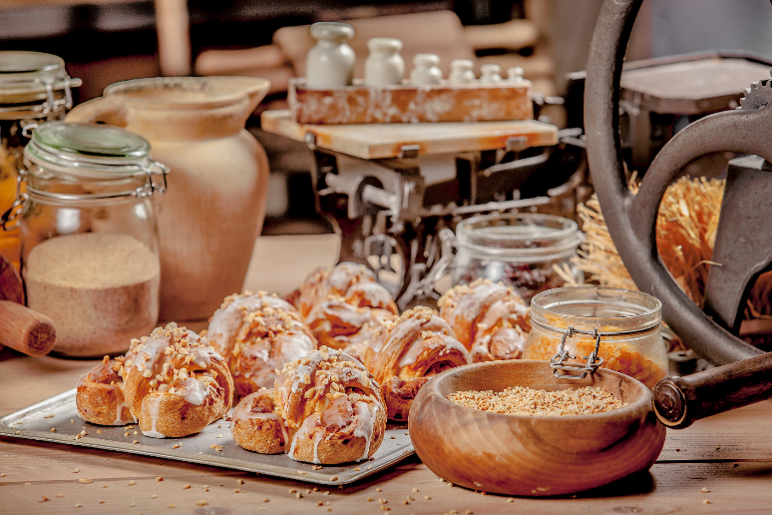
Poznan croissants 
Poznan
Poznan is a thriving economically, culturally and scientifically city in central Poland, which is also the capital of the Wielkopolskie Voivodeship. The only Town Hall in Poland with rumbling billy goats is located here. The Old Market Square is surrounded by baroque houses, and its center is decorated with colorful houses of the poorer citizens and four fountains: Apollo, Mars, Neptune and Proserpine. The oldest district of Poznań is Ostrów Tumski – an island where a huge medieval castle stood, and now stands the Cathedral of Saints Peter and Paul – the oldest one in the country. Moreover, it is probably there, in the Cathedral’s basement, that the first rulers of Poland – Mieszko I and his son Bolesław the Brave were buried. Ostrów Tumski with the Old Town is connected by the Royal-Imperial Route. Along this tourist route there are also other tourist attractions, such as the Imperial Castle or the Croissant Museum of Poznań, where you can participate in baking and tasting regional sweets such as St. Marcin’s croissant, made according to a strictly defined and protected recipe! And after an intense day, you can relax and dine in one of many Poznań’s restaurants serving potatoes with “gzik”(cottage cheese) or Poznań-style-made duck.
Much more about this place CLICK HERE
Gniezno
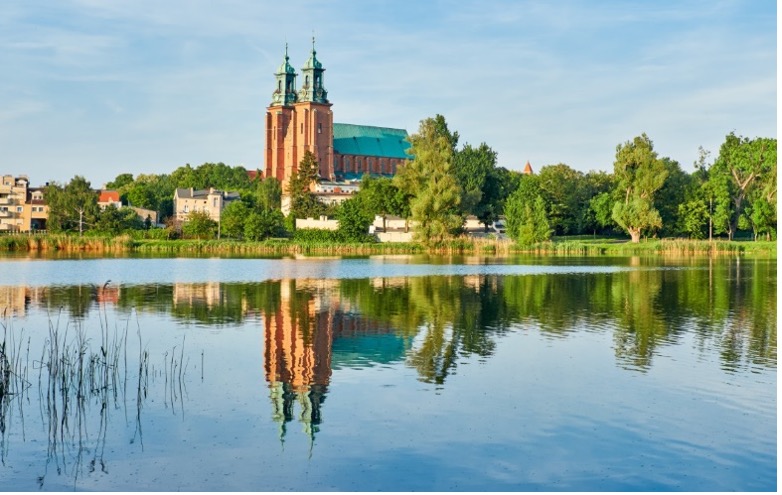
Today Gniezno is a medium-sized city, however, it used to be the first capital of Poland. On one of the seven hills – on the Lech Hill in Gniezno, there is a Gothic cathedral church, which since 1000 has been functioning as the main temple of the oldest metropolis in Gniezno. It is the burial place of Saint Adalbert – the main patron of Poland, the site of five royal coronations and many turbulent events recorded in the history of the Polish state. The most valuable in the cathedral are the Gniezno Doors which depict the life of St. Adalbert and the Saint’s Silver Reliquary. In addition, the main nave of the cathedral is surrounded by fourteen chapels, in which the former metropolitans of Gniezno were buried. The new attraction of Gniezno is the Royal Route created in 2018. This route combines sculptures, models and monuments telling the history of Poland and the city.
Biskupin settlement

Biskupin settlement 
Biskupin settlement 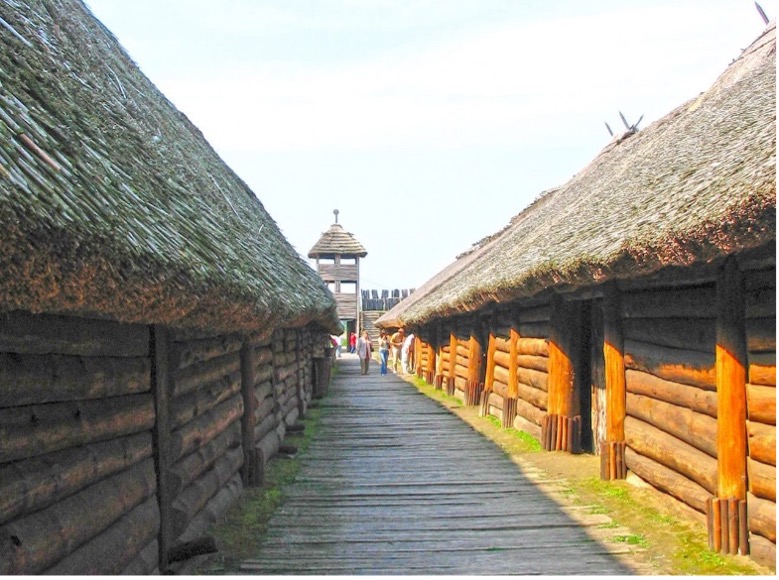
Biskupin settlement
Biskupin is one of the largest archaeological reserves in the world. Thanks to its exceptional value for the cultural heritage of Poland, it was recognized as a Historical Monument. Its discovery was among the 100 most important archaeological discoveries of the 20th century. Today, the reserve includes reconstructions from the Bronze and Iron Age such as visualizations of the camps of hunters and gatherers, settlements of the first farmers, a defensive settlement on the peninsula, box graves, and a ‘Piast village’. Every year in September, the Archaeological Festival is organized in the settlement, attracting thousands of tourists, and the creativity of the hosts makes these festivals incredibly unique in every possible way.
Much more about this place CLICK HERE
Bydgoszcz
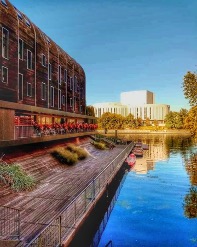
Bydgoszcz 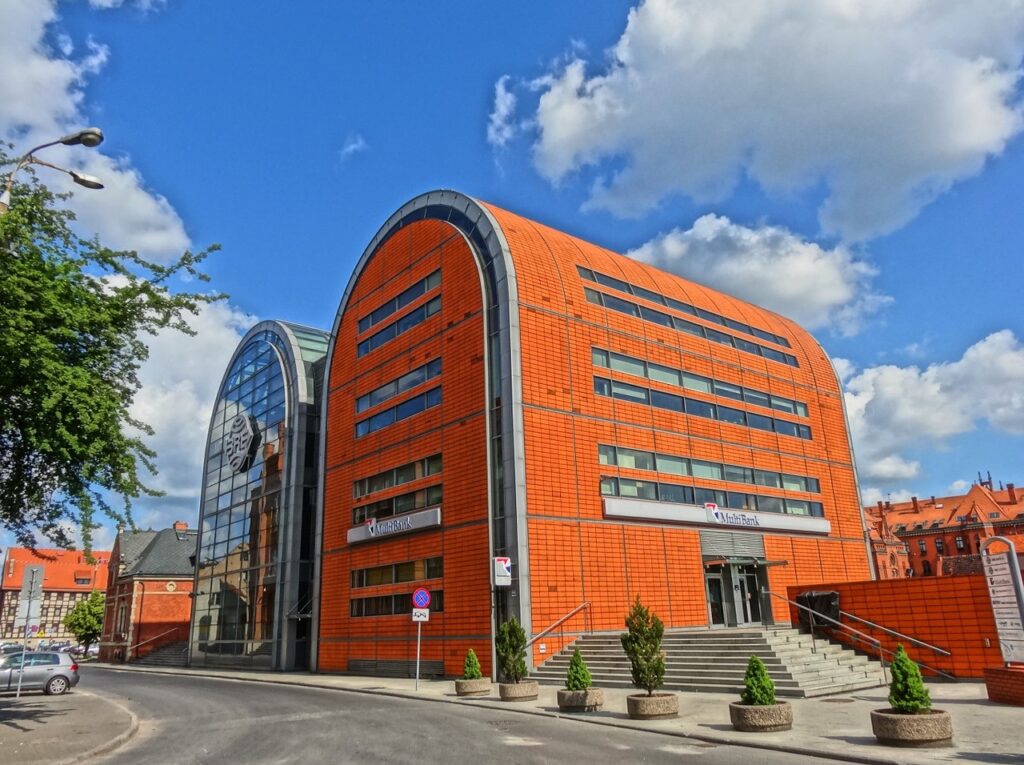
Bydgoszcz 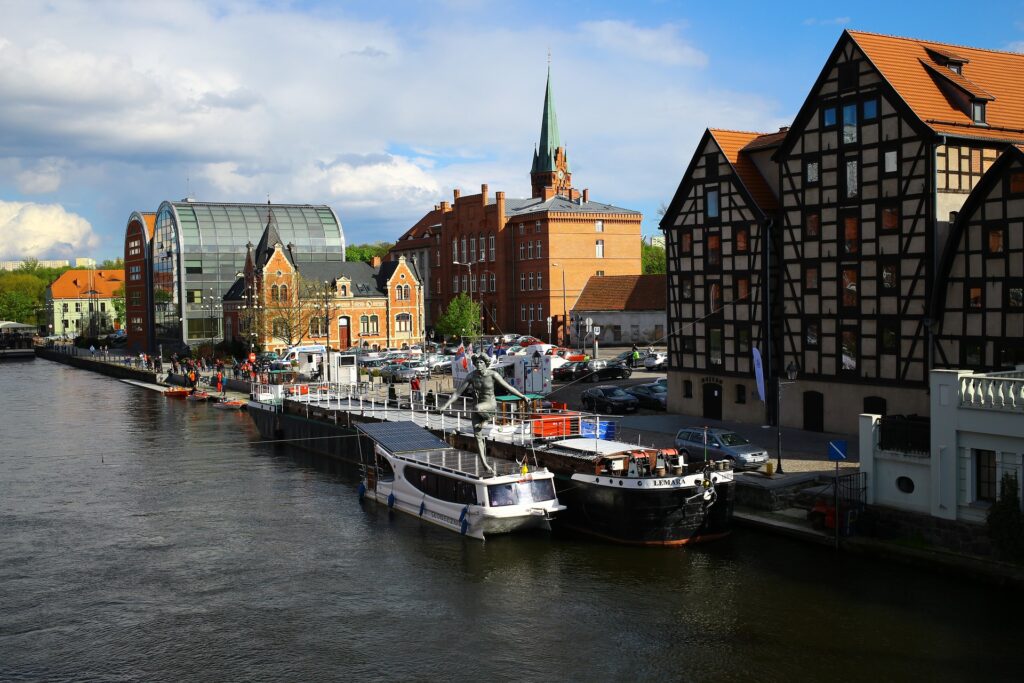
Bydgoszcz 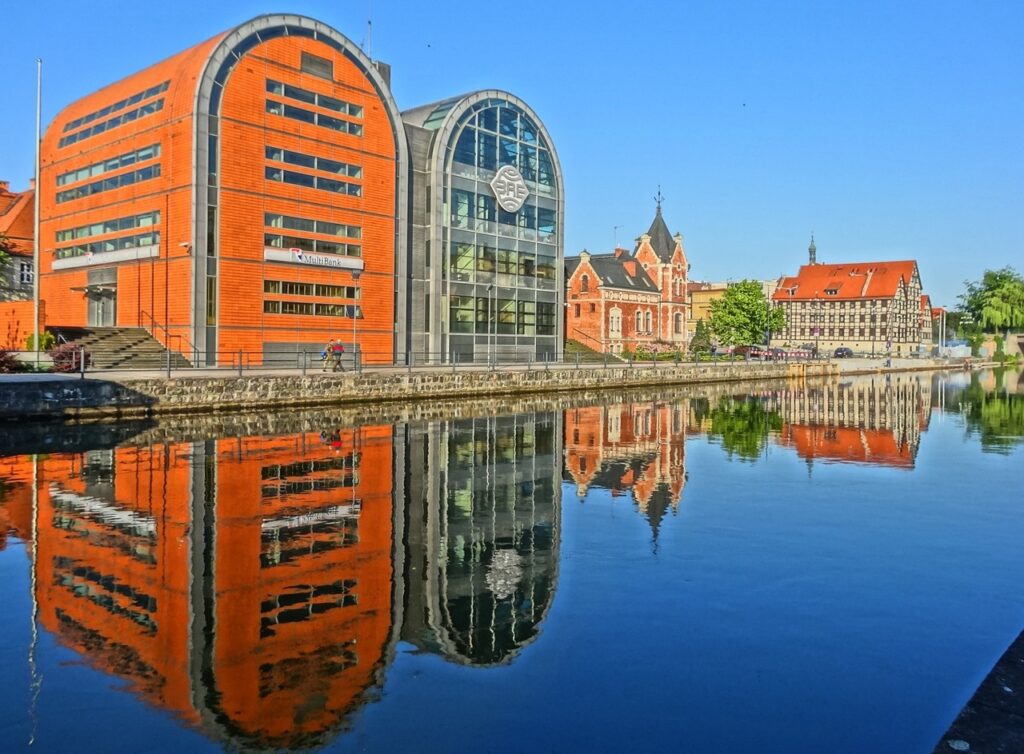
Bydgoszcz
Welcome to the hospitable Bydgoszcz, because the etymology of its name obliges (in Old Slavic, Byd – be gost – guest). Bydgoszcz stands out in architecture thanks to its half-timbered wall and the beautiful Art Nouveau style. The city is often called the little Amsterdam, because almost everything that is most interesting in the city is associated with rivers, islands and canals. If you decide to go on a trip along the Brda River, you can see many interesting places of this city from a different water perspective – Mill Island, Bydgoszcz Venice, the Cathedral in Bydgoszcz, Granaries, the Old Town or the Nova Opera building. And for dinner, you can taste some regional goose dishes or Kuyavian sour soup.
Much more about this place CLICK HERE
SETTLEMENT OF MENNONIC
To the North of Bydgoszcz, in the Lower Vistula Valley, there is a small settlement of Chrystkowo. The area of the Vistula valley was not an easy area to live back in the day. The wetland, marshy and inaccessible area meant that few people wanted to settle here. It was only from the 16th century that these areas began to be subordinated to human needs and farming. It required a lot of work, specialist knowledge and determination. This was largely helped by settlers from the Netherlands, fleeing religious persecution, i.e. the Mennonites. Also Chrystkowo in the 17th century was colonized by Dutch settlers. The interior of the cottage, which was saved by the winds of history, is a living museum filled with old appliances, furniture and the remains of Mennonite tombstones, which remind us of the interesting history of Protestant displaced persons.
Much more about this place CLICK HERE
Chełmno

The first mentions of Chełmno as a settlement speak of the Piast stronghold on St. Lawrence Hill and come from the turn of the 10th and 11th century. Chełmno has many monuments and attractions that allure the tourists. First of all, it is a city exceptionally rich in monuments of medieval architecture. Six Gothic churches have survived here, the medieval urban layout is almost intact, and almost the entire perimeter of the city walls, the town hall rebuilt in the Renaissance style, as well as many tenement houses, the oldest of which date back to the 13th century. Secondly, Chełmno has been advertised as the city of lovers for years. Why? There are two stories related to this. One, about the niece of Nicolaus Copernicus from here, who listened to the voice of her heart, gave up her habit and left the convent for her love for Prince Albrecht’s drummer. The second is related to the miracles that allegedly took place among the people in Chełmno praying to the relics of St. Valentine in the local Faara
Much more about this place CLICK HERE
Golub-Dobrzyn
This city is famous primarily for its beautifully situated castle on a hill. Once a Teutonic fortress, later the summer residence of Princess Anna Wazówna in the Renaissance style. In addition to visiting the castle itself, in the summer season, we can also catch a spectacular knights tournament, where knights from many European flags compete. The castle also offers seasonal attractions such as the New Year’s Eve ball or carnival balls.
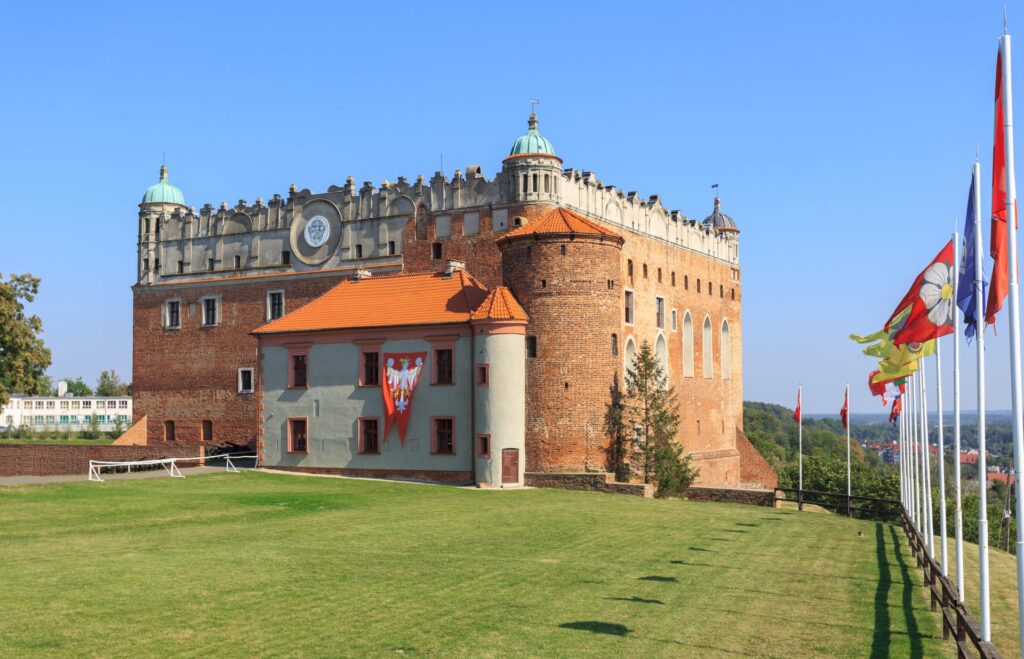
Much more about this place CLICK HERE
Torun
Toruń is famous for its numerous monuments, thematically interesting museums and beautiful viewpoints over the city. The city with its medieval Gothic Old Town, entered on the UNESCO World Heritage List, attracts crowds of tourists every year. The most important places worth seeing are the Leaning Tower, the Old Town Hall, the Monument of Nicolaus Copernicus, the Cathedral Basilica of St. John the Baptist and St. John the Evangelist, Nicolaus Copernicus House, Monastery Gate. Moreover, for those who have more time, Toruń offers the Planetarium or the Living Gingerbread Museum, where you can personally make delicious gingerbreads according to old recipes and take them for yourself or for your family and friends.
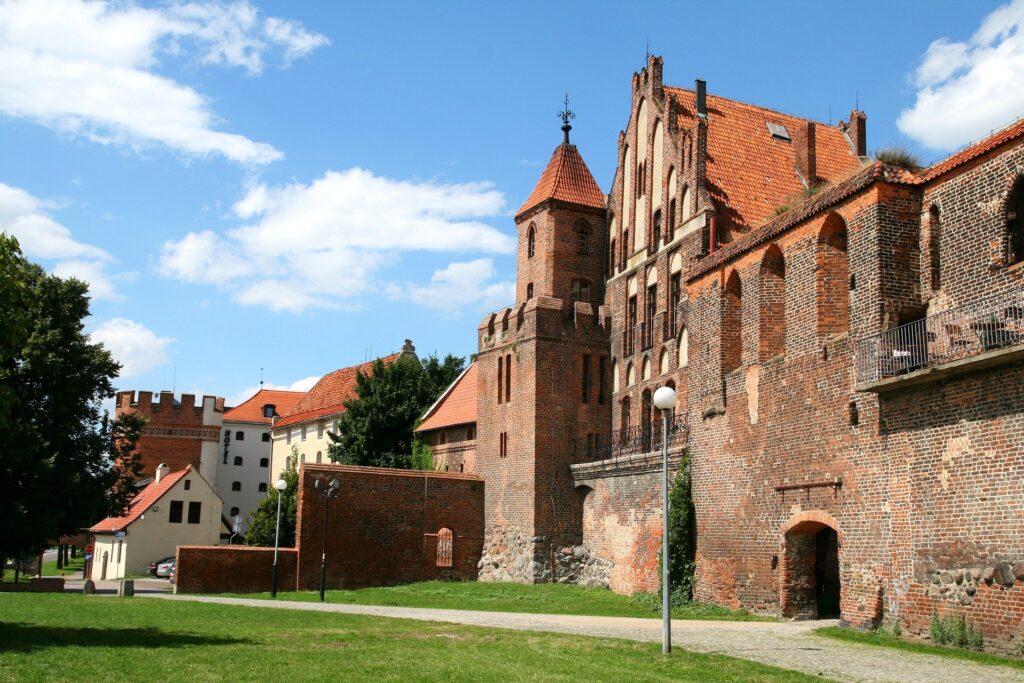
Torun 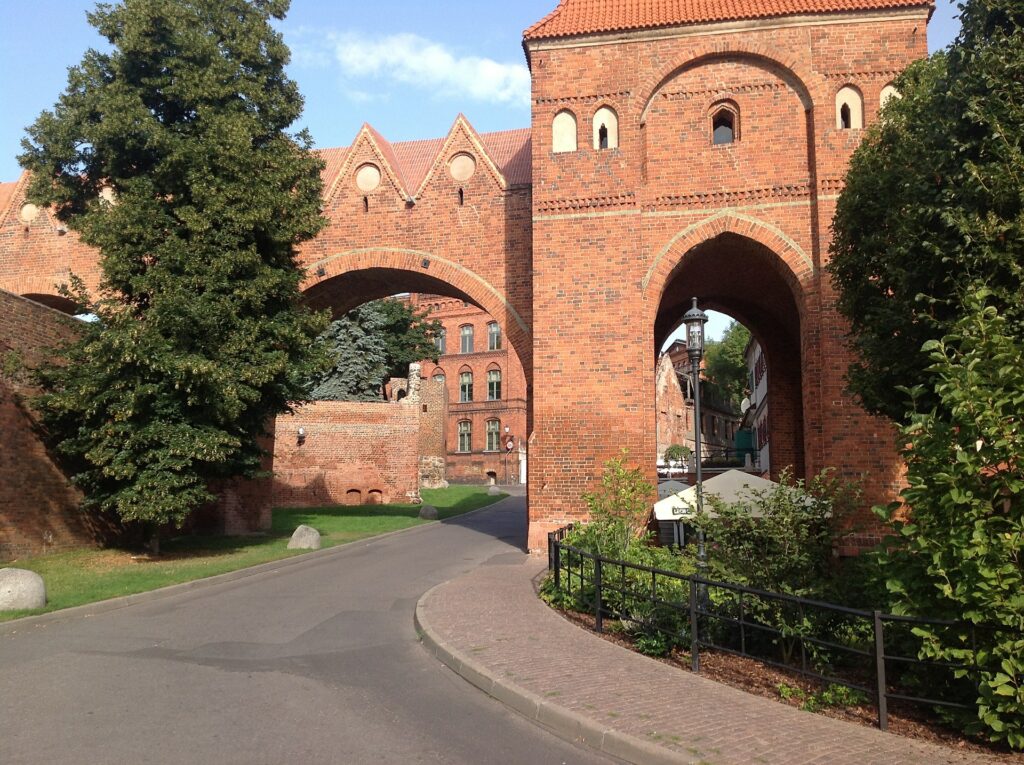
Torun 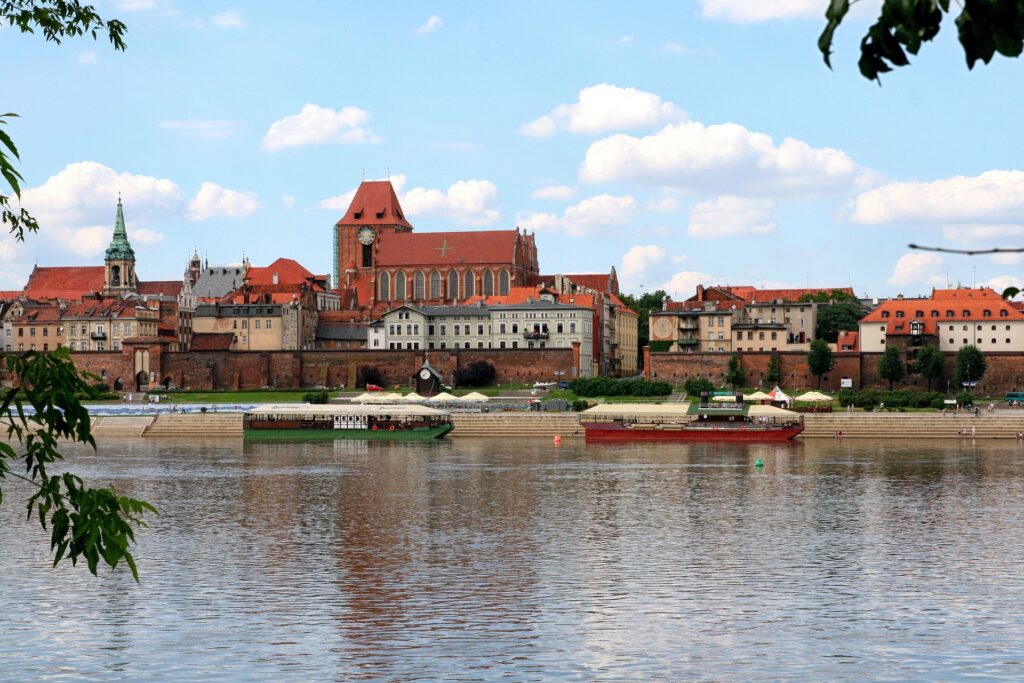
Torun
Much more about this place CLICK HERE
Inowroclaw
A health resort with one of the largest saline graduation towers in Europe. Graduation towers in Inowrocław have the shape of two interconnected polygons, they are 9 meters high and 300 meters long. Brine flows down the walls filled with blackthorn branches. Thanks to this, beneficial aerosols are floating in the air, which help to cure various diseases and states of general exhaustion. At the top of the graduation towers there is an observation deck, from which you can admire the beautiful panorama of the Brine Park and partly Inowrocław itself.

Inowroclaw 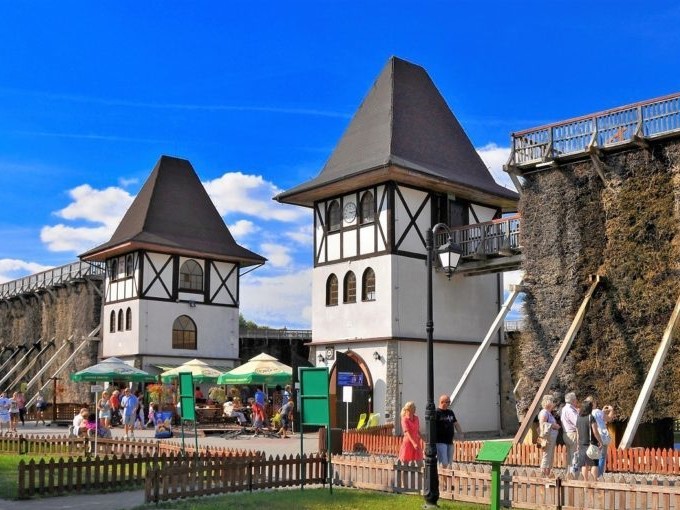
Inowroclaw 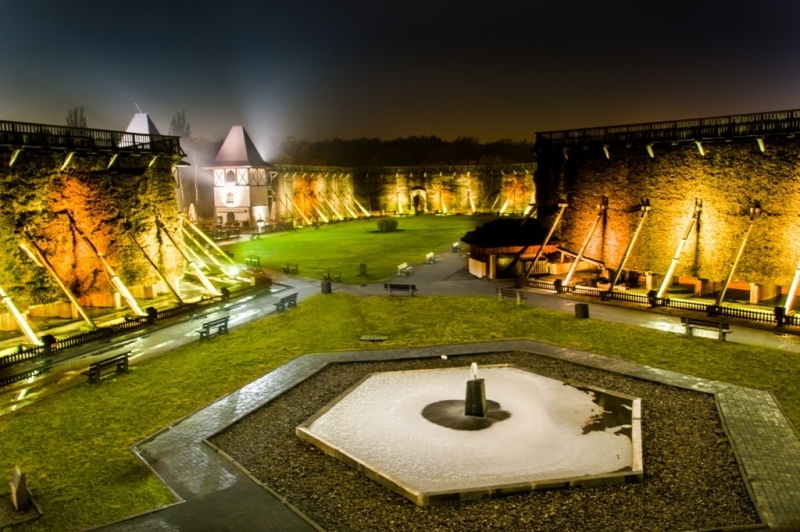
Inowroclaw
Kornik
This small town is mostly known for its castle – a palace belonging to the Działyński and Zamoyski families. Fortunately, thanks to the great commitment of the owners, the interiors of Kórnik survived the most turbulent history events, including the Second World War, without much damage, thanks to which the whole consistently reflects the character of the neo-Gothic interior. In addition to visiting the beautifully decorated castle, it is also worth taking a stroll around the adjacent Arboretum. It is the oldest and richest arboretum in Poland and the fourth largest collection in Europe. On the area of over 50 hectares, there are more than 3,500 types of trees and shrubs, including many exotic ones.
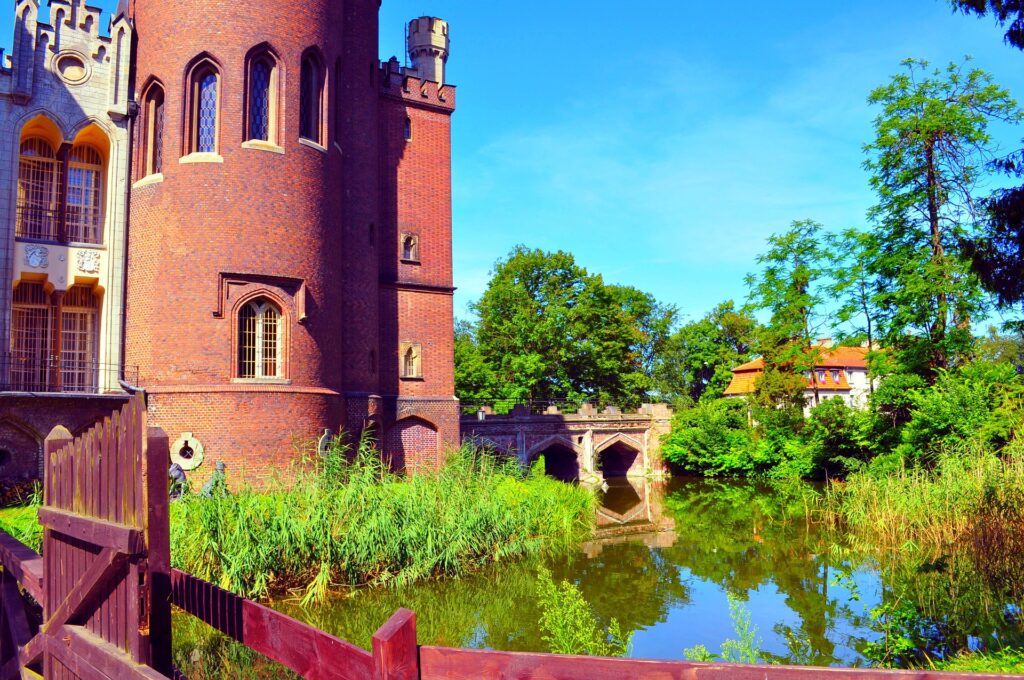
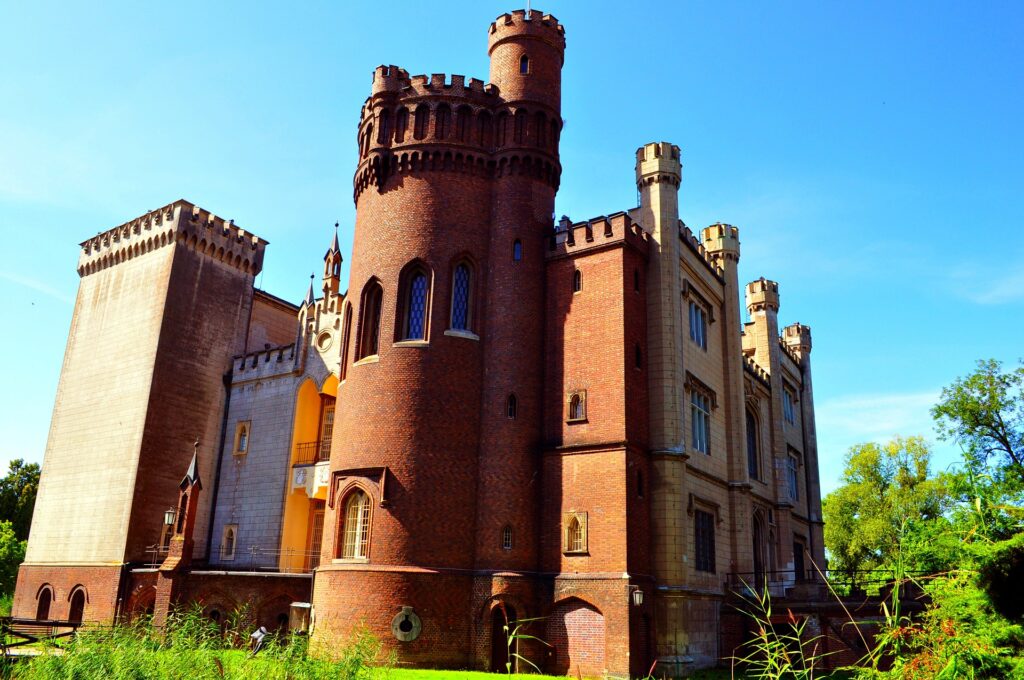
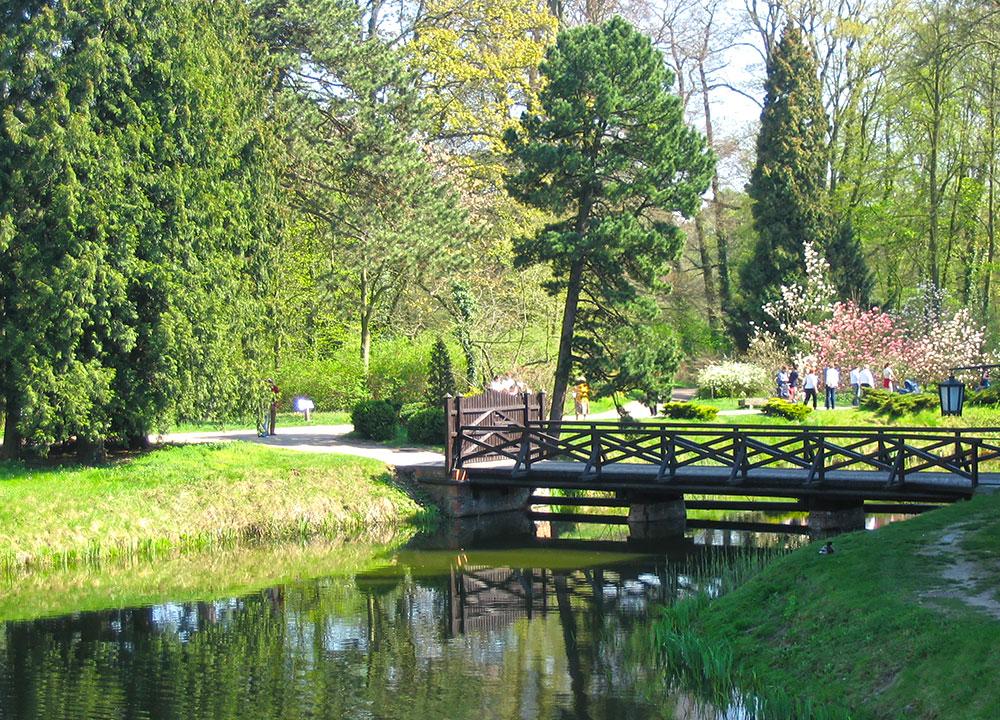
Much more about this place CLICK HERE
Rogalin
The palace and park complex in Rogalin has the status of a historical monument. This former residence of the Raczyński family, in addition to its stunning interiors, also has a collection of paintings that is worth seeing. This gallery has in its collection works by artists such as: Julian Fałat, Jacek Malczewski, Jan Matejko and Stanisław Wyspiański. In addition, tourists’ eyes are delighted with the gallery of ancestors, a well-equipped carriage house and a beautifully arranged park. Thanks to the carefully renovated interiors, you can move back to the nineteenth-century times for a moment.

Rogalin 
Rogalin 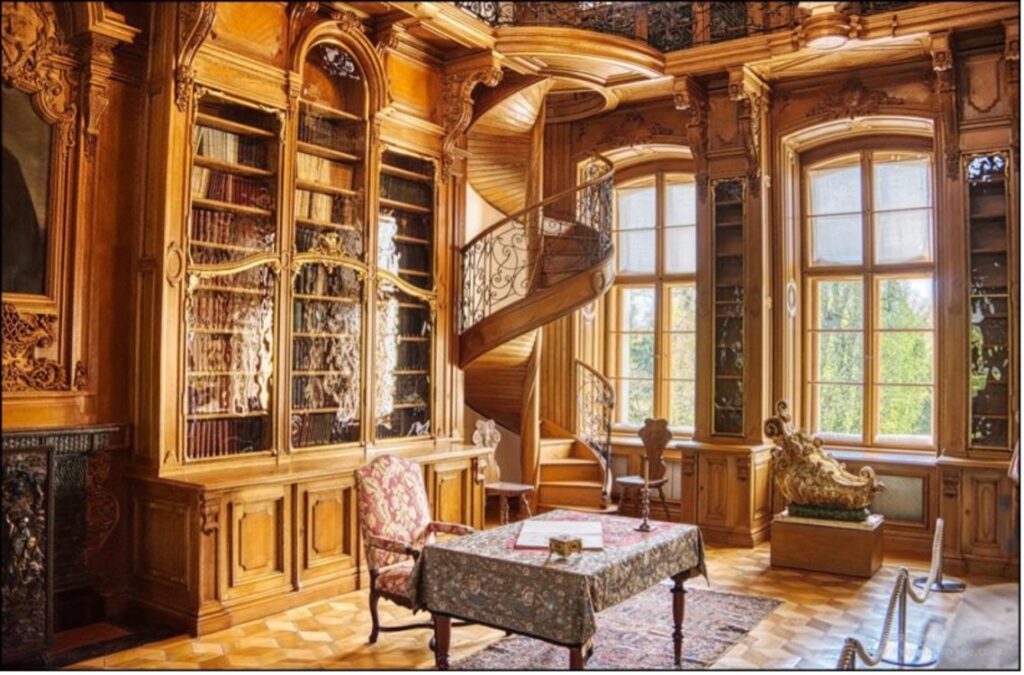
Rogalin 
Rogalin
Much more about this place CLICK HERE
TOURIST OFFER
All the places described in the article are the Main Points of the Program in the offer of the organized trip available at the link “Poland of the Piasts, welcome to Wielkopolska and Kujawy“







